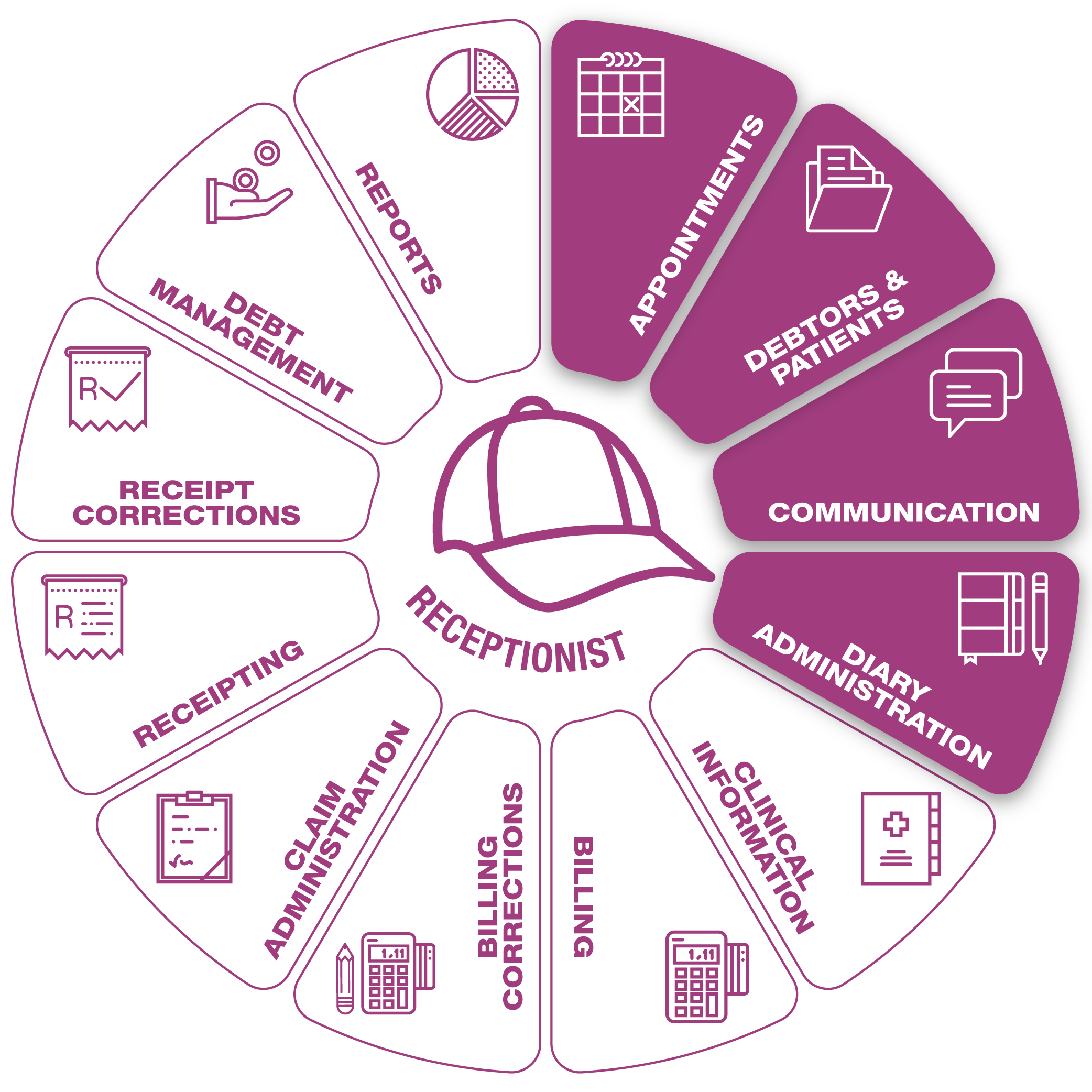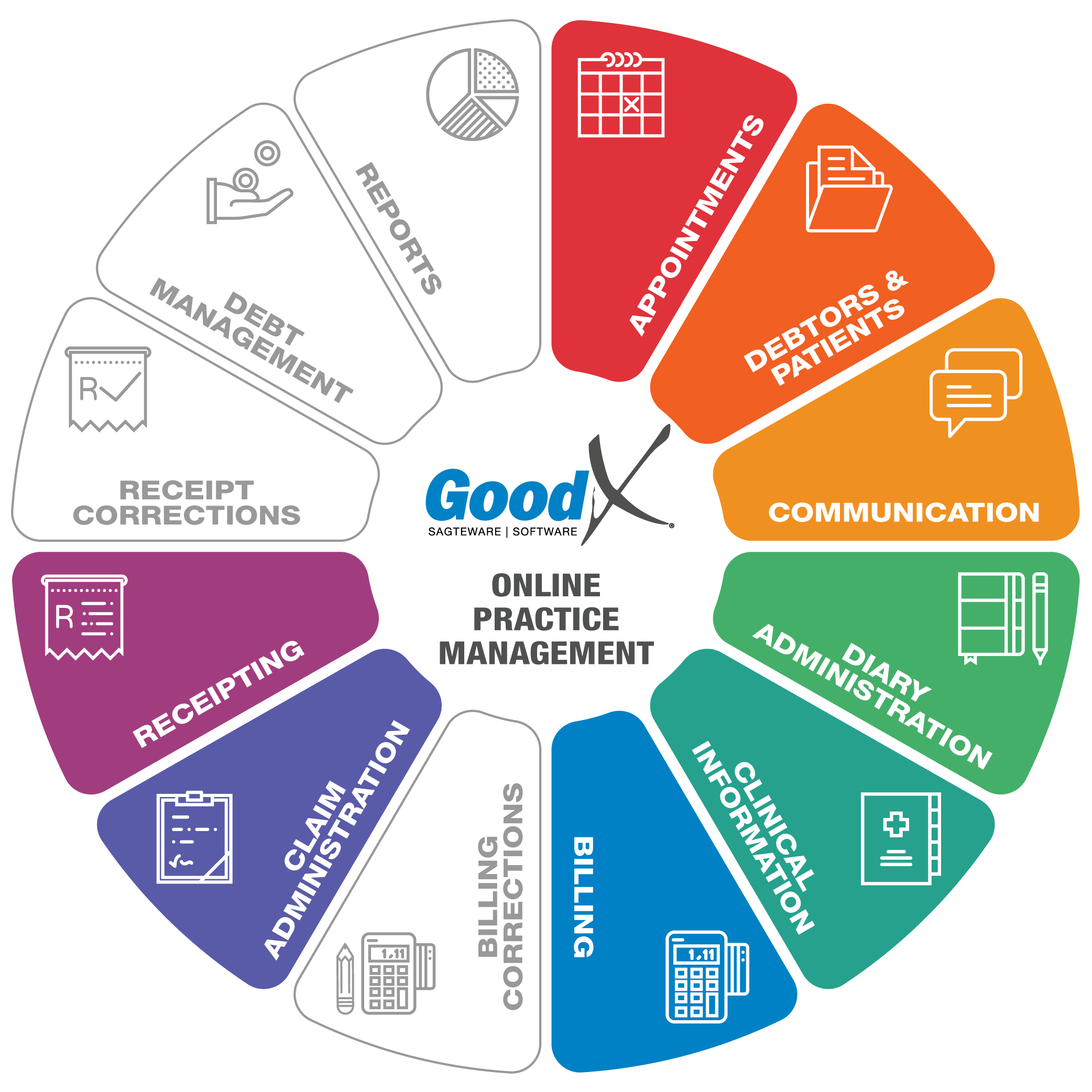3. Roles and responsibilities in Telehealth
To run Telehealth successfully within the larger practice management framework, we suggest that competent personnel should assist the practitioner to ensure that all tasks as described in this guidelines book are diligently and successfully performed.
Consider the following:
- Make sure that all employees know what their roles are and what is expected of each role by documenting the roles. A lack of proper role division and work definition can result in needed tasks not being completed.
- Role division gives the practice the ability to:
- divide work optimally between personnel;
- implement a separation of duties;
- implement access control;
- avoid labour disputes due to personnel not knowing what their responsibilities are.
- This best practice guidelines book is designed to assist the practice to implement proper procedures per role so that all critical business processes are completed and can be audited with the internal controls as described in the GoodX Healthcare
Management Internal Controls book.
Roles in the practice
|

We suggest that the following
roles be involved in Telehealth practice management. Please note that you do not need to recruit each of these roles, but one person can cover more than one of these roles, depending on the size of your practice. When recruiting staff you can use these role descriptions to make sure that the person has all the necessary skills to make your practice a success and that all personnel know what their responsibilities are.
|
The diagrams for the roles show where the roles are active in the larger practice management framework. The descriptions have been limited to Telehealth for the sake of this guidelines book.
|

Practitioner
Appointments: Ensure that all his/her day's planning is on the electronic diary so that reception can manage the expectations of patients. Check if there are any open time slots so that the Practitioner can make him/herself available for call-in patients ("Walk-in" patients). Debtors & Patients: The practitioner needs to get the proper information from the patient if it is a call-in patient whose administration was not done by the receptionist.
Communication: The practitioner has to ensure that professional webside manners are adhered to and that patients understand and consent to the Telehealth process. The practitioner has to make sure all tasks are checked and completed, for eg. finalise scripting, review pathology reports, and ensure results have been communicated to patients.
Diary Administration: Check the online diary and manage the time per appointment with each patient. Inform the receptionist if any appointments must be postponed or extended.
Clinical Information: The practitioner is the only person who is legally allowed to complete and access clinical/medical information regarding the patient. Clinical information will be completed by the medical practitioner to keep a record of the patient’s health information, treatments and/or medications that are used or will be used. The practitioner is legally bound to keep patient health records for a period of no less than 6 years depending on the speciality and procedures.
Billing: Do billing and switching while treating the patient or provide clear, readable and correct descriptions and ICD10 codes to the Billing Expert to avoid rejections. Keep a record of procedures and all medicine and materials.
|
| |

Receptionist
Appointments: Complete all online bookings for telehealth appointments on the electronic diary. Manage all changes in bookings.
Debtors & Patients: Open electronic files of Debtors and Patients, upload all required documents, ensure the correct demographic information is completed. Do validations and benefit checks before consultations. Double-check demographic information. When dependants pass away or get their own medical aids, they must be marked inactive and moved to their own electronic files.
Communication: Ensure all communication has been responded to and all tasks at hand have been completed. Send SMS reminders to patients to remind them of their appointments. Send birthday wishes to patients, ensure all documentation is uploaded, and up to date. Check all Telehealth booking invites were sent successfully.
Diary Administration: Move, extend, and cancel appointments. The Multi-Doctor view can be used to ensure the correct management of all available time slots. Ensure all demographic information is correct and up to date. When appointments are cancelled, ensure that the Waiting List is managed.
|
| |

Billing Expert
Communication: Check all tasks daily. Ensure all communication from the Practitioner was received, understood, and completed. Ensure the method of communication from the practitioner regarding the billing codes, whether it would be done via E-mail, tasks, or clinical events is being communicated clearly.
Billing: The Billing Expert needs to have advanced knowledge of the speciality’s billing codes and rules to ensure accurate and optimal billing. Ensure all medical aid billing is switched/sent to the medical aids and make sure all corrections are done. All billing must be done on a daily basis to ensure correct figures and healthy cash flow. Private patient billing must preferably be done before the patient leaves the Telehealth consultation so that the need for debt collection is limited.
Claim Administration: Validations and import data functions are important tools to prevent rejections. Ensure all claims are sent on a daily basis. Follow up on all rejected claims or line items on the claims immediately, do corrections and resend claims to medical aids. (Complete the 4 R’s: Reverse, Redo, Resend, Resolve.) Ensure all claims are dealt with and that Approved-in-full claims are resolved to update the list which the Credit Controller uses to follow up on outstanding claims.
|
| |

Credit Controller
Communication: Use SMS, E-mail, and VOIP calls to communicate with Patients with outstanding accounts. All communication between the credit controller and the medical aid/patient must be documented and recorded. Complete all tasks. Claim Administration: Ensure all possible methods are used to correct claims and all claims are sent to medical aids. Ensure medical aids receive all claims so that payment can be received with the next payment run of the medical aids. Ensure correct claims are marked as resolved and that claims that have not yet been resolved are flagged for debt collection.
Receipting: Allocate EFT payments to the correct patient's accounts. Medical and Payment link ERAs must be posted on a daily basis but only when the amount is visible on the practice’s bank statements. ERAs that have not yet been received into the bank account of the practice, should not be posted, otherwise, there is no reminder to follow up on payments with Medical Aids that have not paid.
|





